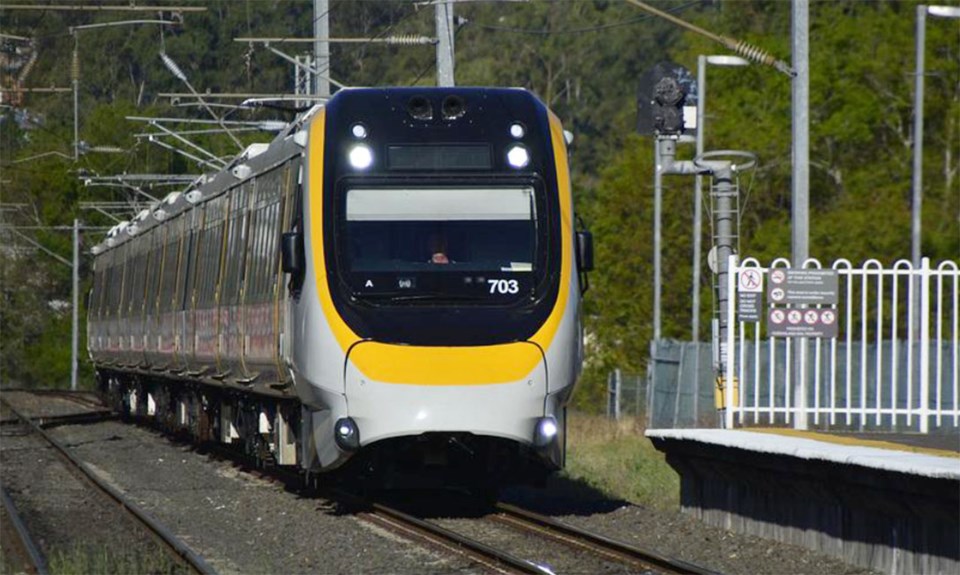South Delta can forget about rapid transit coming through the community the foreseeable, or even long-term, future.
During the May 31 provincial government budget estimates debate, Delta South Liberal MLA Ian Paton posed several questions regarding the George Massey Tunnel replacement project to Transportation Minister Rob Fleming.
Noting South Surrey and White Rock and fast growing, and the aim should be to get people out of their vehicles, Paton once again pointed out the original bridge project cancelled by the newly-elected New Democrat government included a provision for future light rail.
“My question to you: with this tunnel being so modern, so high-tech, why wouldn’t we look to the future of some sort of light rail capability through the middle of the tunnel? Eventually, one day – maybe 10 years, maybe 20 years, maybe 30 years from now – we could get light rail. There’s tonnes of room down the middle of Highway 99 and the medians on either side for light rail to go down to South Surrey, White Rock,” said Paton, according to transcripts of the debate.
Fleming responded that there’s “actually been some fairly recent regional thinking” on the subject by TransLink and by the Mayor’s Council in its recent 2050 plan.
“In fact, they looked as far ahead as 2080, through TransLink and their planners. Highway 99 through to the year 2080 did not give ridership projections that would support light rail of SkyTrain systems,” noted Fleming. “In fact, what they analyzed was the superiority of high-frequency bus service, both from a capacity point of view – to move people out of their cars as the member wished for – and also to give flexibility in terms of service coverage, to be able to service a number of very dispersed destinations that are part of that area. SkyTrain, going through farmland, going down the Highway 99 corridor, did not have the ability to disperse to a number of endpoint destinations.”
Fleming also noted the analysis received came from TransLink, with regional mayors around the table also looking at the data to make the determination on where the greatest pressure points will be and what areas will have lesser population growth.
It’s the same message former Transportation and Infrastructure Minister Claire Trevena conveyed in 2020 on the question of adding future rapid transit capability for the new crossing.
At that time, Delta Mayor George Harvie said he was shocked by her response.
“Insofar as no need for light rail, I’m shocked. I’m working with my fellow mayors. We’re looking at what the next 20-to-30 years is going to require, and light rail is needed south of the Fraser. With all the people that we have coming, most of them are going to be residing and relocating to south of the Fraser where the properties are a little less expensive. But again, I’m shocked. I just drove the tunnel, as you know, and it’s a tough drive….we need to get people out of their cars and if we’re not thinking in the future, we’re going to have problems here,” Harvie said two years ago.
According to Metro Vancouver’s Draft 2050 document, Frequent Transit Development Areas (FTDAs) are intended to be additional priority locations to accommodate concentrated growth in higher density forms of development. They are identified by member jurisdictions and located at appropriate locations within the Major Transit Growth Corridors.
Corridor FTDAs are intended to accommodate medium development densities and forms that are consistent with bus-based rapid transit, while Station Area FTDAs are intended to accommodate higher development densities and forms that are consistent with rail-based rapid transit.
Meanwhile, among Paton’s other questions to Fleming last week was whether the new tunnel project would include a second exit out of Ladner, an issue recently raised by the City of Delta, which is asking the province to include another exit.
Fleming responded that they are having “active discussions” with Delta staff about the scope of the project.
The province is currently in an early engagement phase of the environmental assessment process for the Initial Project Description. The new tunnel project is to be further refined based on feedback received.
A Detailed Project Description is to be ready by next summer.
Following the environmental assessment, construction of the new tunnel is to commence and finish by 2030.




